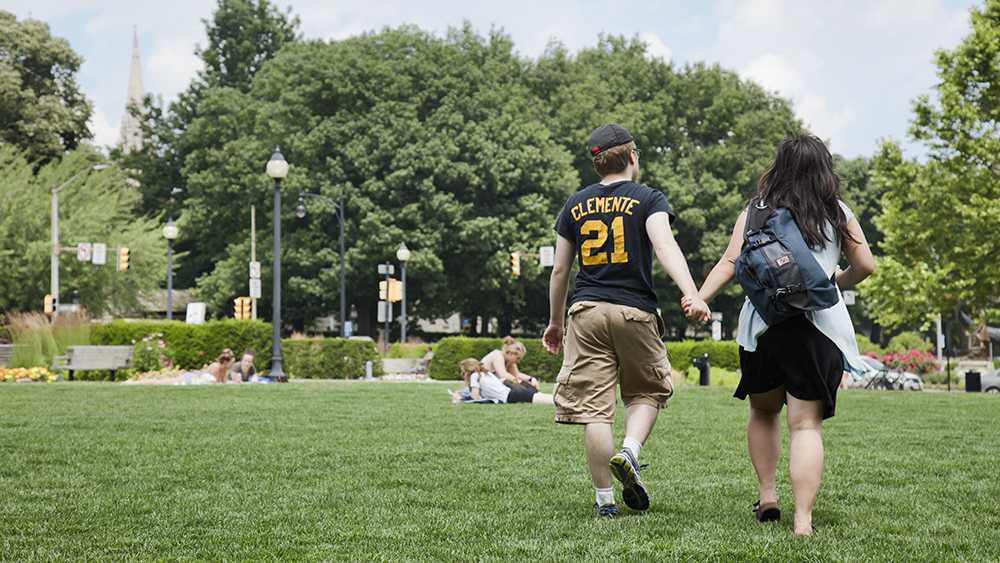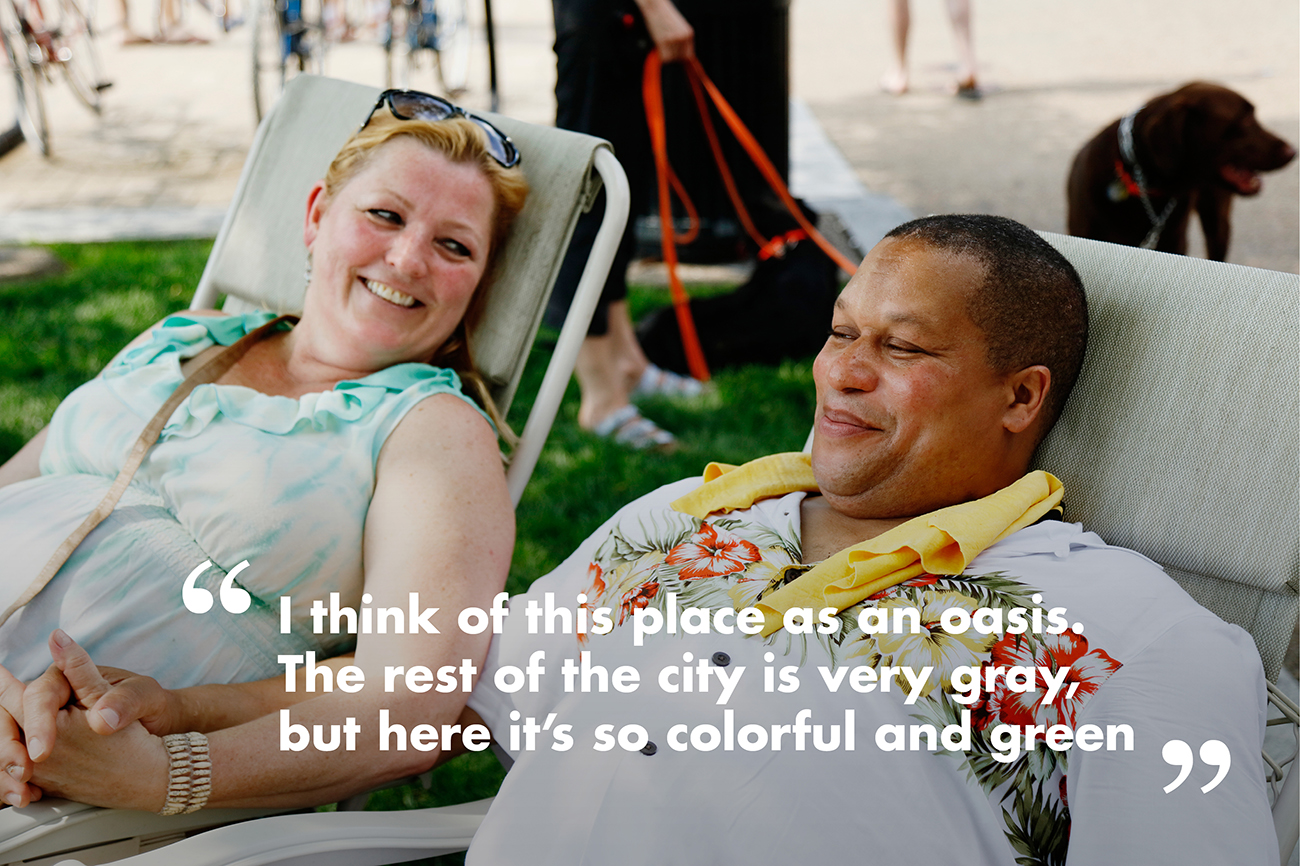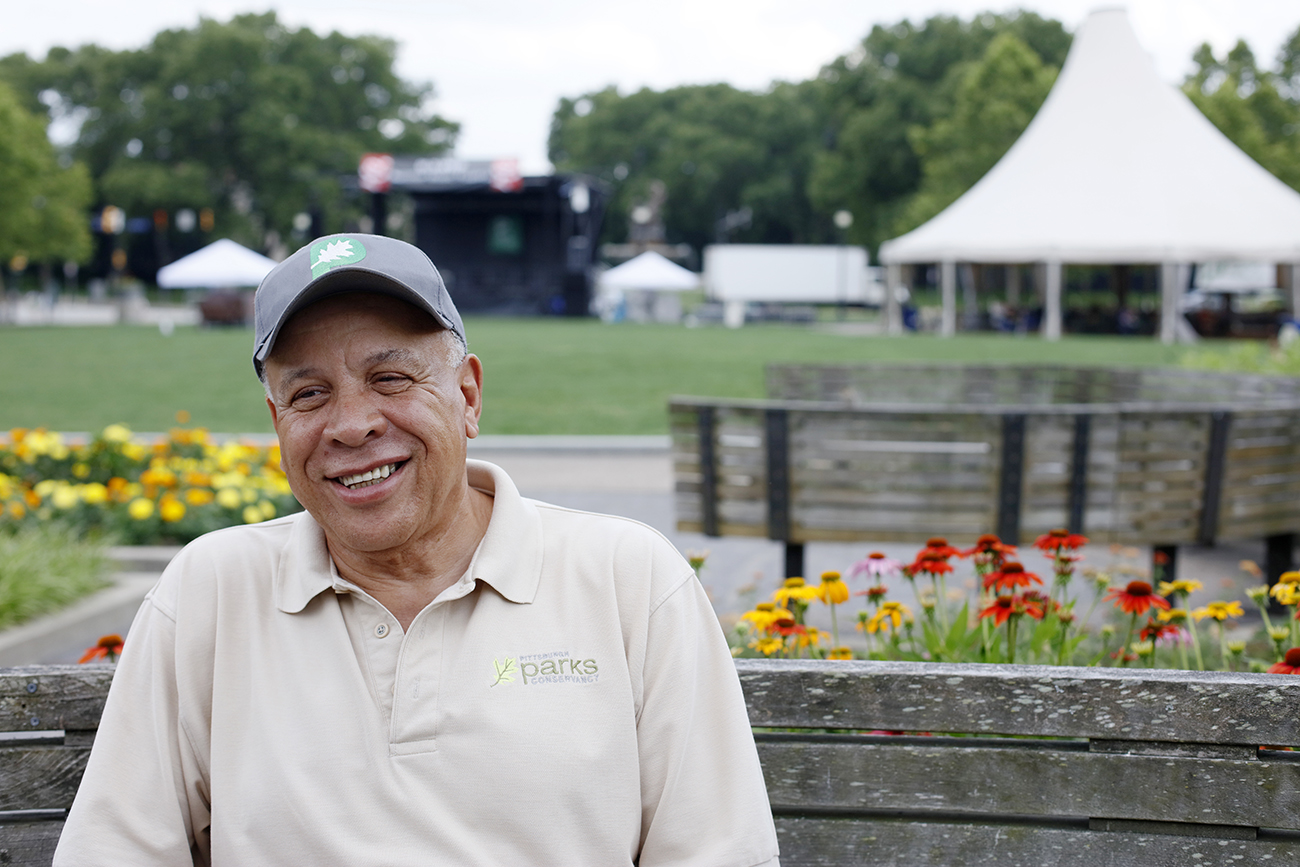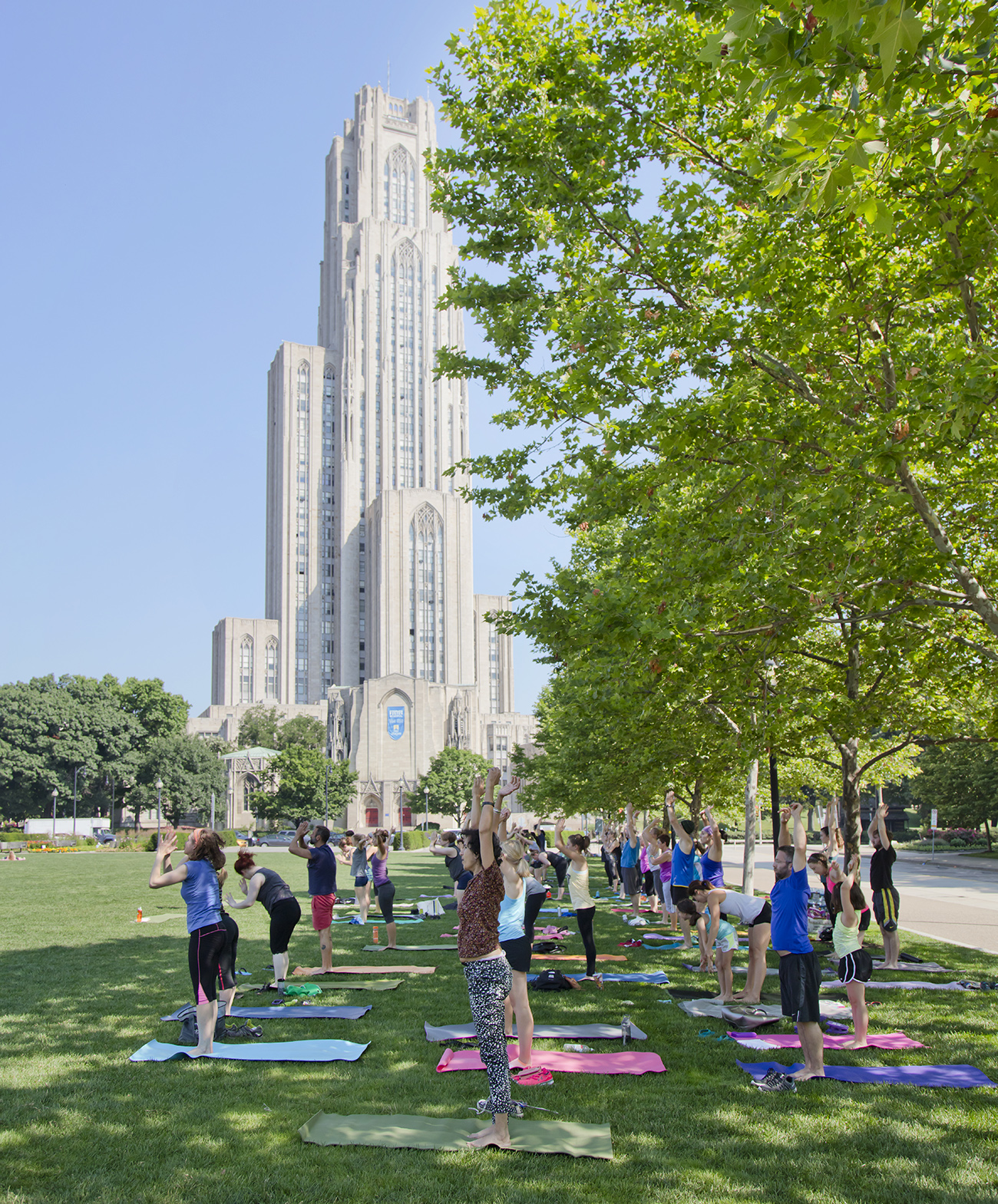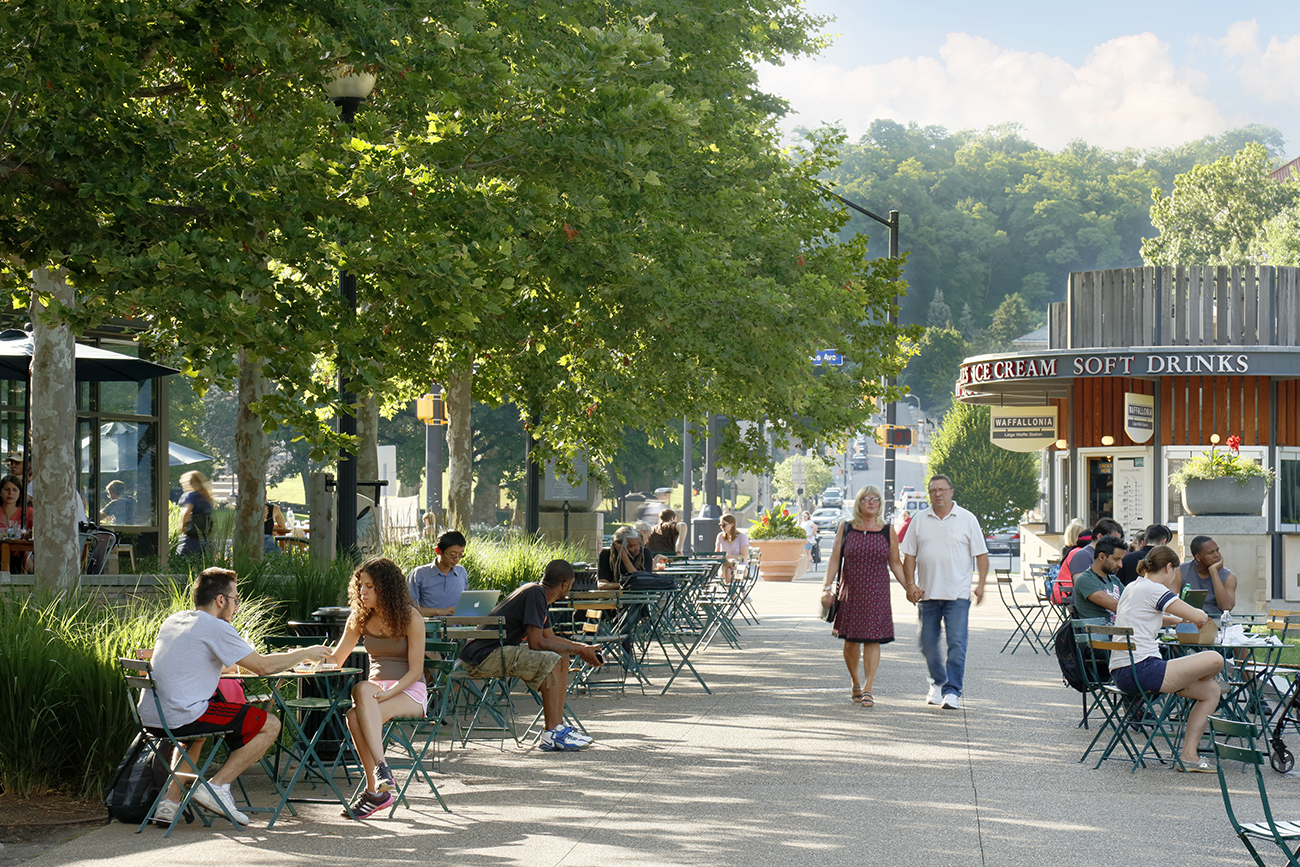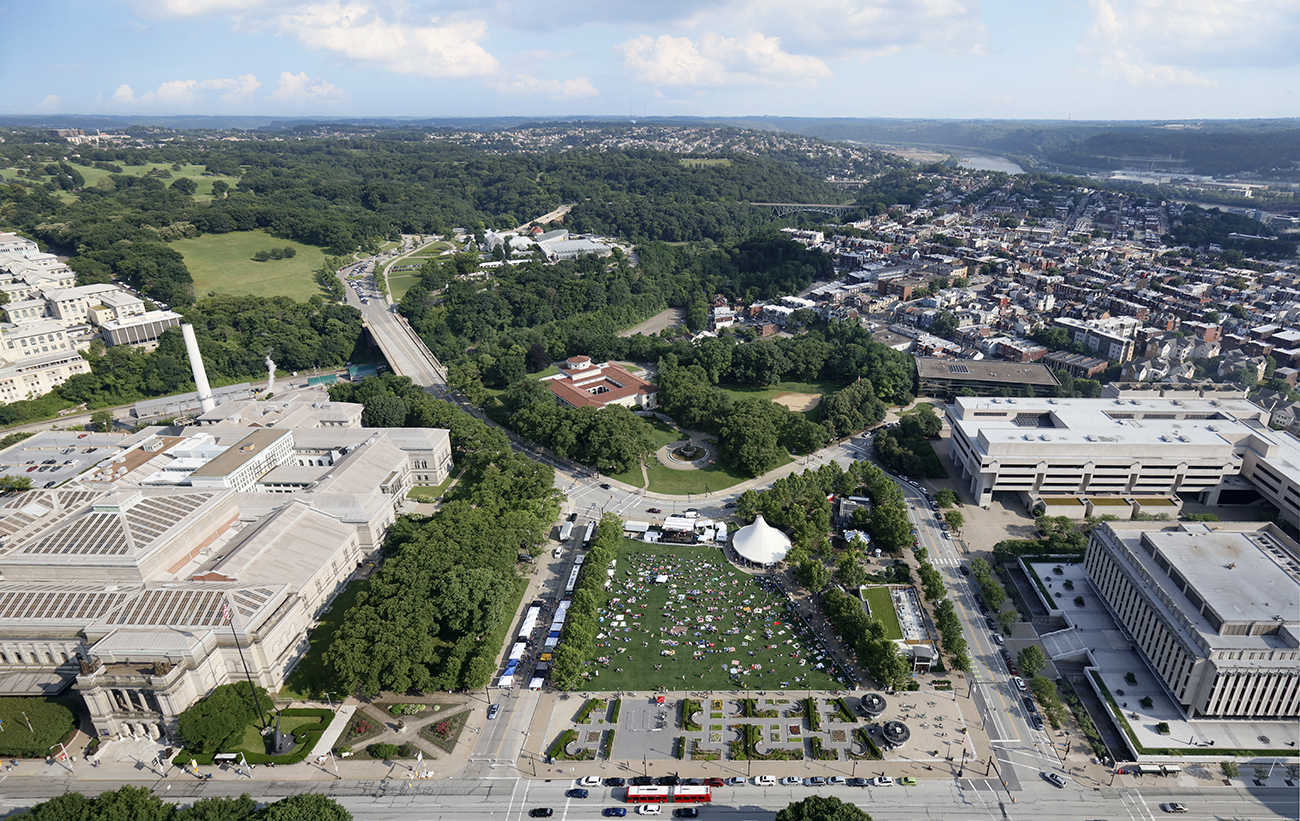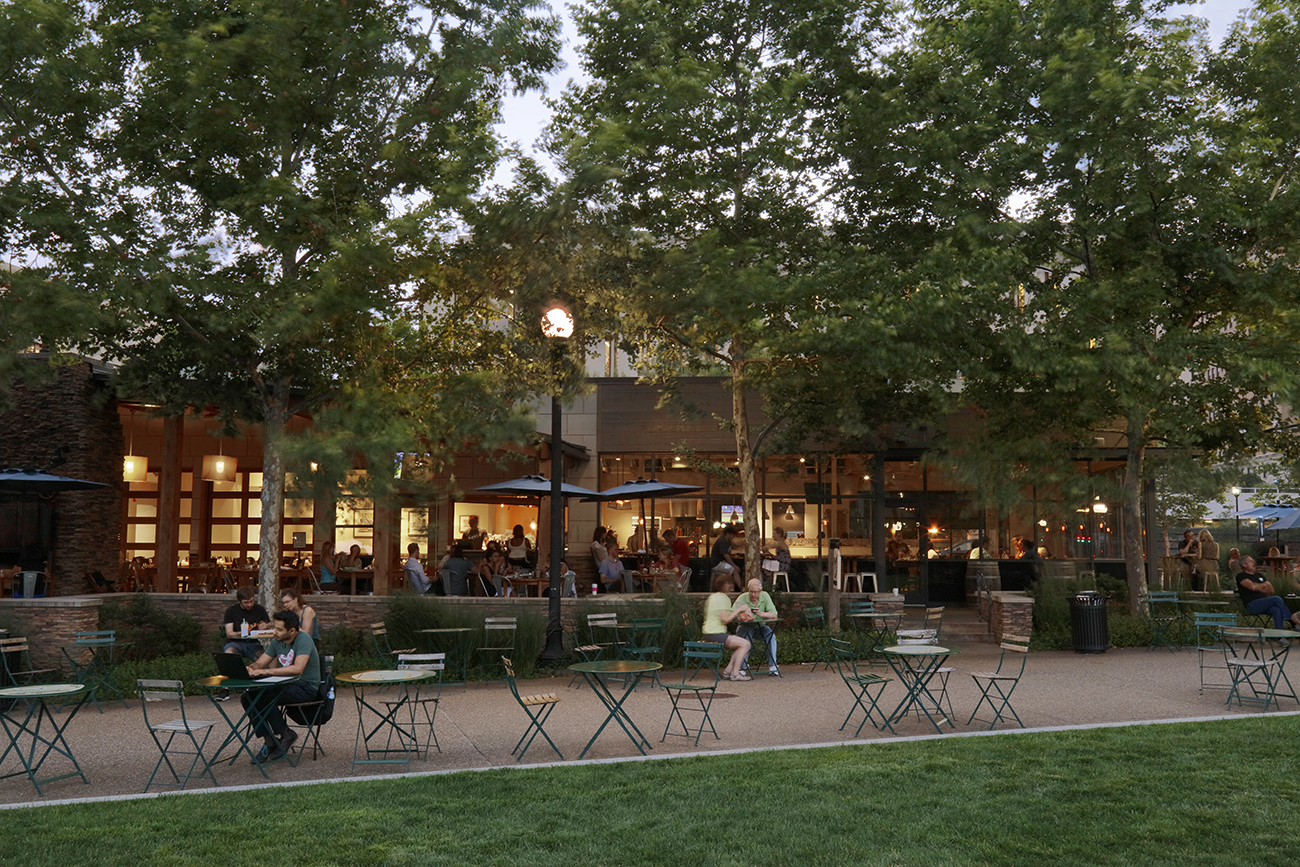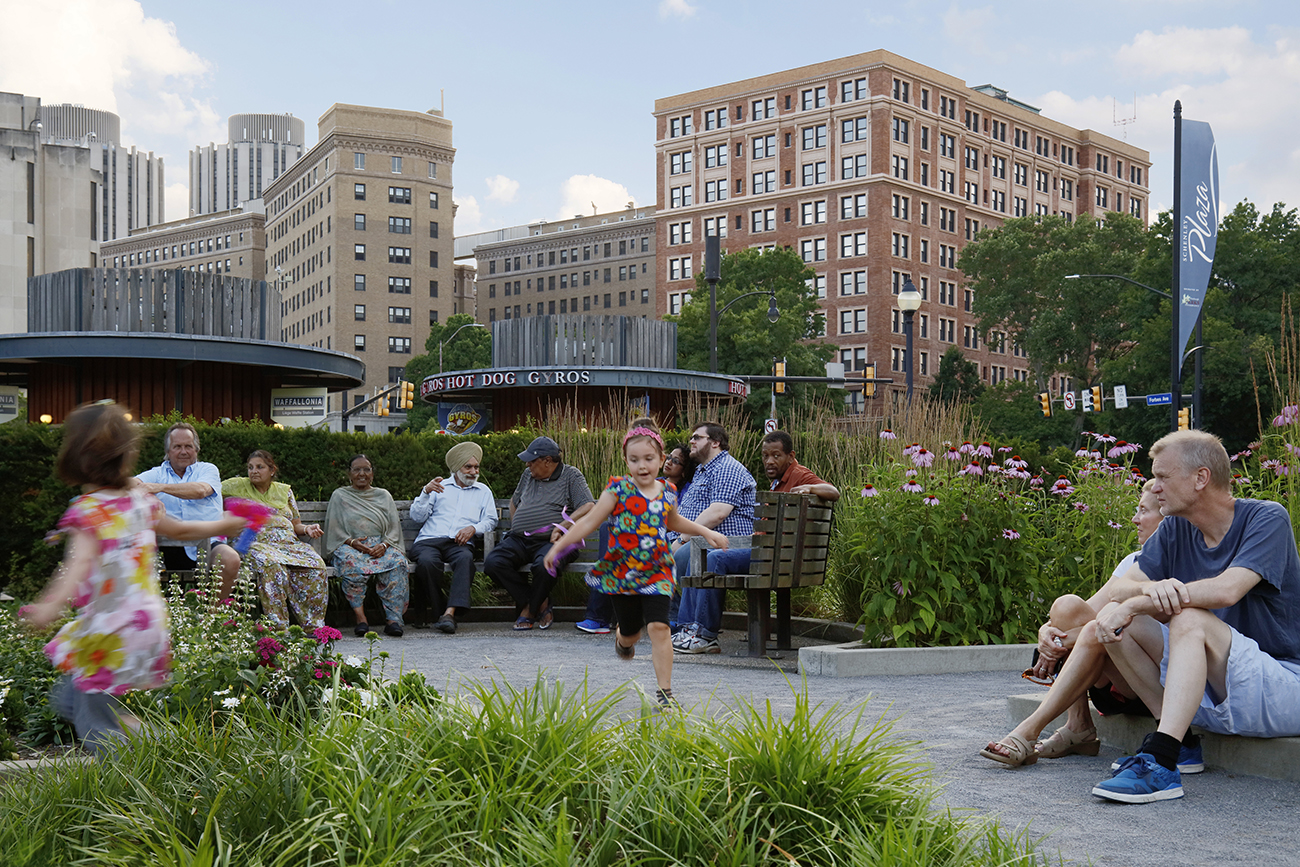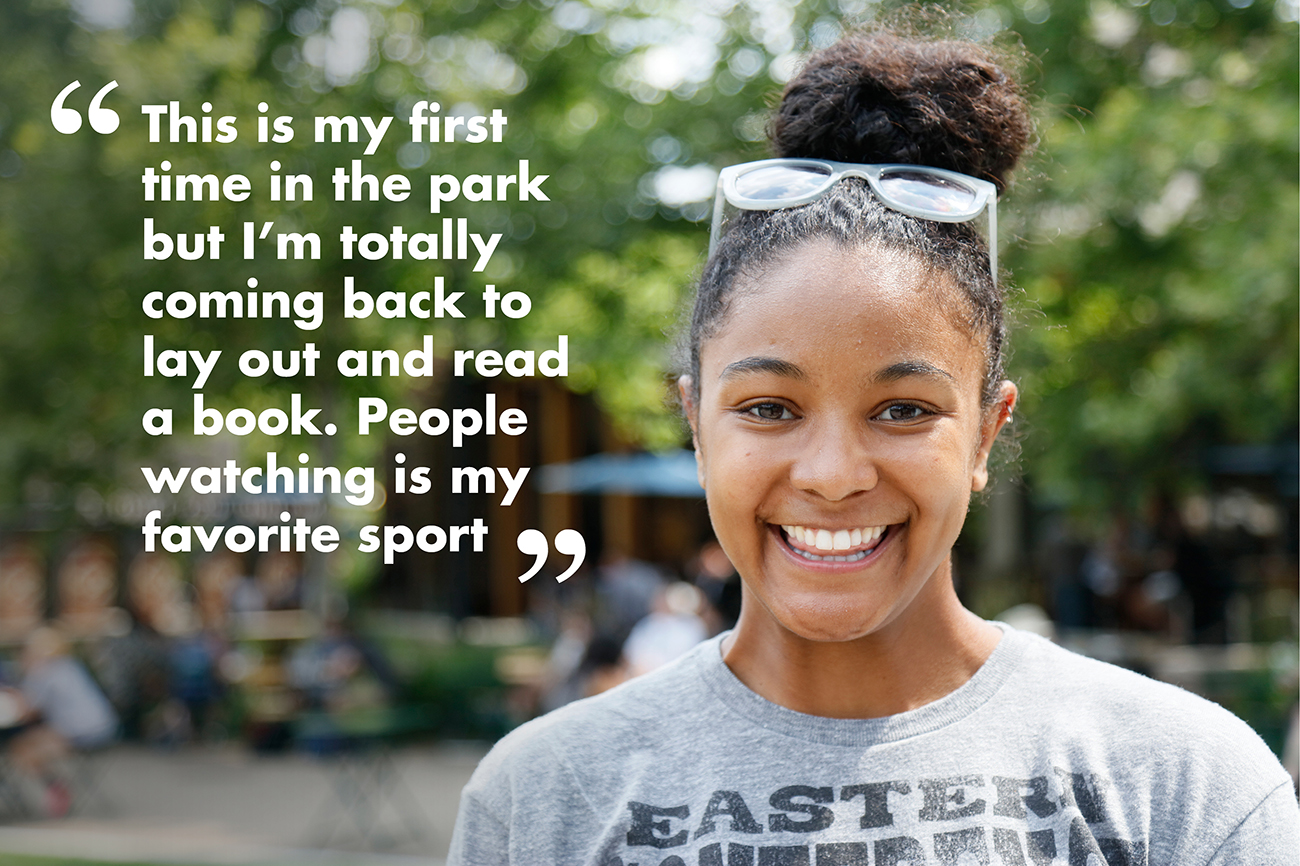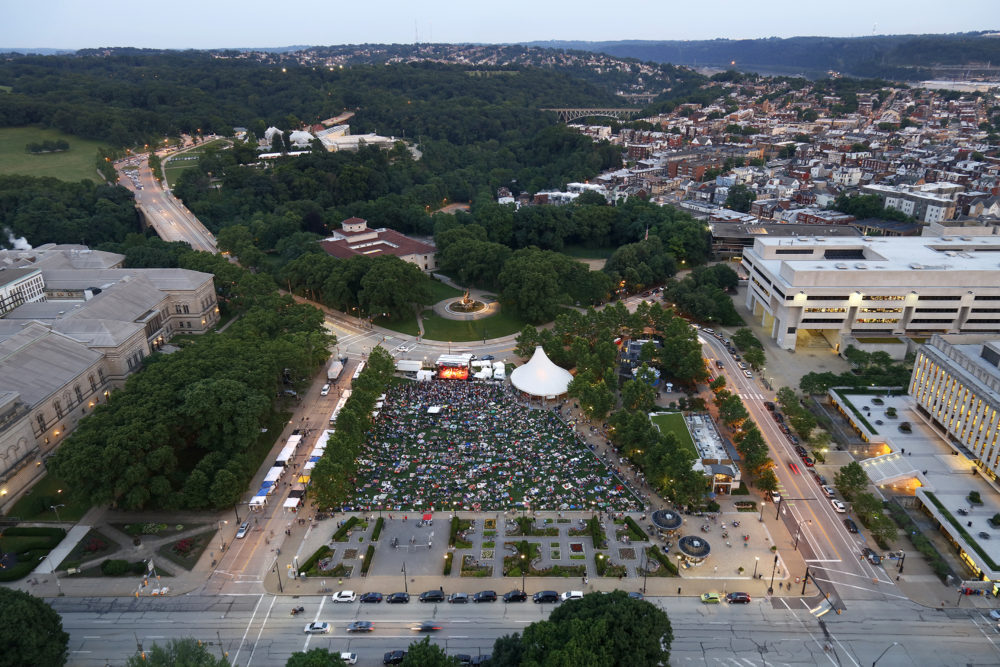On a bright day in June of 2006, the Pittsburgh Parks Conservancy (PPC) celebrated the opening of Schenley Plaza. The five-acre green space is now celebrating its 10-year anniversary, and during the summer of this major milestone, I was lucky to be able to revisit the project that has played a key role for the City of Pittsburgh, and for me personally. When I first came to Sasaki in July of 2003, fresh out of grad school, my very first assignment as a landscape architect was to work on the transformation of the plaza. Thirteen years later I have managed numerous other complex, transformational urban landscape projects, but as the first one I saw from concept through to construction, Schenley Plaza will always hold a special, formative place in my heart and my career.
Situated in the heart of Oakland, between the University of Pittsburgh, Carnegie Mellon University, Phipps Conservatory, and the Carnegie Museums and Library, the plaza project was intended to restore the space to its historical function as the gateway to the larger Schenley Park to the south. In doing so it would replace a large surface lot that provided 280 parking spaces for area businesses, institutions, and the wider community. Naturally there were some grumbles over the loss of parking, but the City of Pittsburgh, the PPC, and the other institutions had a bold vision: “The goal…was nothing less than the transformation of this gritty, drab slab of asphalt into the green heart of Oakland.” Visiting the space 10 years later during its anniversary season, it’s clear that that mission has been accomplished. We found that many people had either forgotten or never knew that the area used to be a parking lot. My colleague Gina Ford summed it up well by saying, “before, this was just a ‘nothing’ space, nestled between these major anchor institutions. Schenley Plaza took that nothing and turned it into a bona fide place.”
I’ve been thinking about the project this year, its 10th year of operation, and the success that the plaza has enjoyed. What makes the space work so well, and what are the lessons we can share with the rest of our clients looking to build cherished community gathering spaces? How did a former parking lot embed itself into the imagination and identity of so many Pittsburgh residents and visitors? The reasons are many, for sure, but I’ve compiled a few of my observations on Schenley Plaza into a short list of 10—one for each of its years.
In no particular order, here are 10 key observations on the plaza’s continued success:
Details Matter: The plaza makes use of generously sized pavers and granite curbs throughout. And the payoff on the investment shows—they look pristine 10 years later. The pavers only require occasional power-washing to keep them in tip-top shape. Originally the lawn curbs were specified as concrete, but a last-minute donation from the Howard Heinz Foundation made the upgrade to granite possible—a great example of a donor understanding that a subtle investment in the bones of a place can be the most valuable contribution of all.




